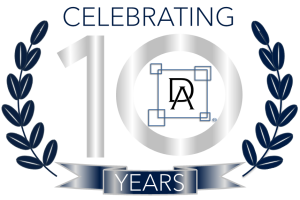Download a free sample chapter, “Chapter 3: Block Definition Diagrams,” from SysML Distilled: A Brief Guide to the Systems Modeling Language, and then read on to learn how it started.
It was March 2011. I was a software engineer on the Lockheed Martin program that supported the Mission Control Center System (MCCS) at Johnson Space Center in Houston, Texas. Our design teams were creating SysML and UML models of various subsystems and components. For several months, I had been delivering a series of SysML and UML training courses to the engineers on those teams–training that focused specifically on the narrow subset of language features and diagram types that we needed for our planned deliveries.
A Lockheed Martin Engineering e-mail newsletter popped into my inbox one day. An article caught my eye; the Object Management Group (OMG) was now offering a SysML certification–the OMG Certified Systems Modeling Professional (OCSMP) certification. Even better…Lockheed Martin was offering exam vouchers to any employee willing to engage in some self-study to prepare for the exam.
I took a look at the OCSMP Model User (Level 1) exam coverage map on the OMG web site. My hubris quickly evaporated. I realized that I was going to have to expand my SysML repertoire to pass even the first of the four OCSMP exams. Not a problem, though. All I had to do was hop on Amazon and find a good book.
I had read Martin Fowler’s UML Distilled in 2009. It was exactly the kind of book I wanted. It would provide broad coverage of the language with just enough depth to prepare me for the OCSMP Model User exam. If I needed a more comprehensive book for the higher-level exams…well…one step at a time. I typed “SysML Distilled” into the search field on the Amazon site and hit enter.
I couldn’t believe it. Amazon wasn’t offering it.
I tried Barnes & Noble next. Not there either.
Finally, I tried Borders. (Still in business back then.) No luck there.
The stunning realization hit me: this book didn’t exist. Surely that couldn’t be. SysML had been around since 2007. And it was now 2011. Surely one of the many gurus in the systems modeling community had written SysML Distilled by now. UML Distilled was very popular. I knew with all my heart that there had to be a Distilled book for SysML, too.
I vainly searched the three sites a few more times using variations of keywords. It really didn’t exist.
Fortunately, I found another book that had excellent reviews: A Practical Guide to SysML: The Systems Modeling Language by Sanford Friedenthal, Alan Moore, and Rick Steiner. I bought it. And I got to work.
There was a lot to learn. Big book. Big language. (Not as big as UML, but still pretty big.) I joined the OMG SysML Revision Task Force (RTF) e-mail distribution list, and I began dialing in to listen in on the RTF’s weekly teleconference calls to learn as much as I could from the Olympian gods of systems modeling. By June, I felt ready to take the OCSMP Model User certification exam. I passed. Two weeks later, I took the OCSMP Model Builder: Fundamental exam and passed. I gave the book another read. I downloaded and read several of the other references available on the OMG web site. In early August, I took the OCSMP Model Builder: Intermediate exam and passed.
It was a hard test. I knew that the last one–the OCSMP Model Builder: Advanced exam–would be even harder. I went back to the OMG web site and downloaded every single reference it suggested I should read. I printed them out; they filled up a 3-inch binder. I studied them laboriously for about seven weeks. In late September, I took the OCSMP Model Builder: Advanced exam, and–to my astonishment–the computer informed me that I had passed. It was one of the hardest exams I had ever taken.
Starting in July 2011 (shortly after passing the OCSMP Model User exam), I began offering SysML training to a group of engineers on my program at Lockheed Martin–volunteers who were willing to dedicate some personal time to preparing for the OCSMP Model User and OCSMP Model Builder: Fundamental exams. We formed a study group, and I guided them through A Practical Guide to SysML. The hard part–I discovered–was distilling that comprehensive book down to the subset of information they needed to pass the first and second certification exams. I created a study guide for them over the course of several months. By October, all of them had earned the OCSMP Model User certification, and several went further and earned the OCSMP Model Builder: Fundamental certification.
I was driving home on a Friday afternoon in late October 2011, lamenting how time-consuming it had been to create that study guide for them. I reflected back on my vain search for the nonexistent SysML Distilled earlier in the year. If only one of those gurus on the SysML RTF would get around to writing that book, it would make my job as a SysML trainer a lot easier. It would certainly be better than that rudimentary study guide I had created.
These thoughts raced through my mind as the traffic on I-45 slowed to a crawl. And these thoughts reached their logical destination long before I reached my physical one: why not me?
I shook my head, daring that thought to stick around. It persisted. Why not me? I know SysML. I’ve been giving SysML training for a year now. I used to be a licensed math teacher; I’m good at teaching. I can write reasonably well. I have the OCSMP Advanced certification. I’ve been a contributing member of the SysML RTF. I just finished creating a distilled study guide. Why not me?
No, this was a ridiculous idea. Those Olympian gods of systems modeling that I had been interacting with weekly for several months were far more qualified to write this book than I was. It was presumptuous of me to think that I could be the one. Me, the author of SysML Distilled? Who was I? I laughed at my arrogance.
I couldn’t shake the thought, though. By the time I arrived home, it didn’t seem quite so crazy anymore. I walked in the door, kissed my wife, and told her that I was going to write a book. I told her about my idea. And I walked her through the same thought process that carried me up I-45. She nodded…and smiled–a sweet, loving, humoring smile. Then she turned back to the pile of mail she had been in the middle of opening. I went into my office. I opened a web browser, did a Google search on “Addison Wesley Writers Guidelines,” and printed out their book proposal template.
That was a Friday night in late October 2011. Today is October 24, 2013. And next month on November 23, 2013, SysML Distilled will be released for distribution. It’s been a long two years. I spent many late nights and weekends writing the kind of book that I was looking for back in March 2011 when I started out on the formal study path. I hope that you find this book to be helpful as you undertake that same journey.
Download a free sample chapter, “Chapter 3: Block Definition Diagrams,” from SysML Distilled: A Brief Guide to the Systems Modeling Language.
I would love to hear your feedback. You can reach me at ldelligatti@delligattiassociates.com.
Happy modeling,
Lenny Delligatti


